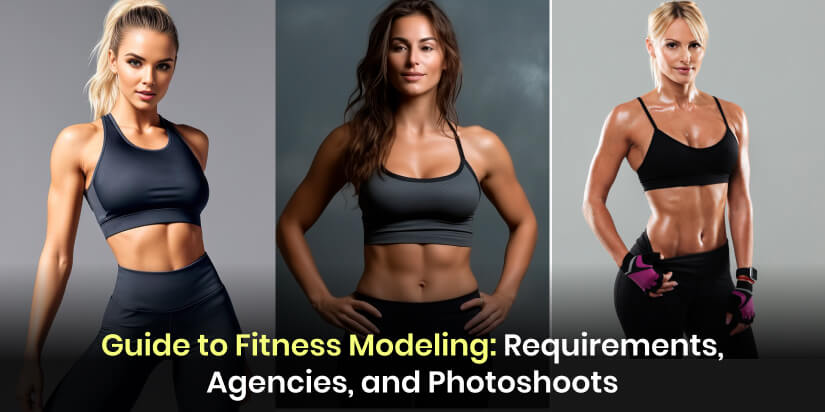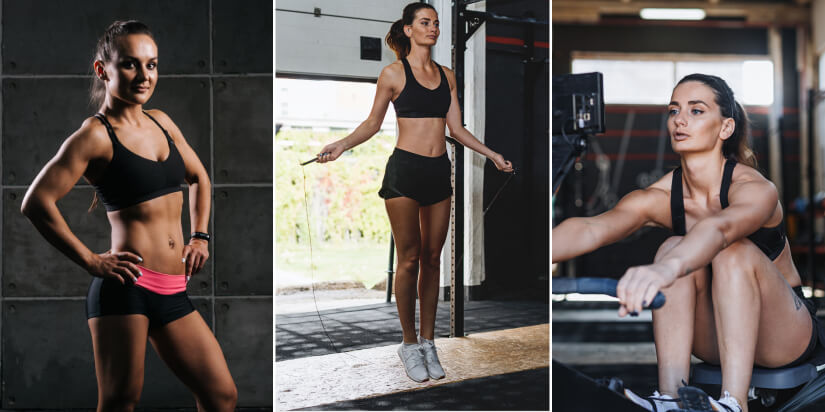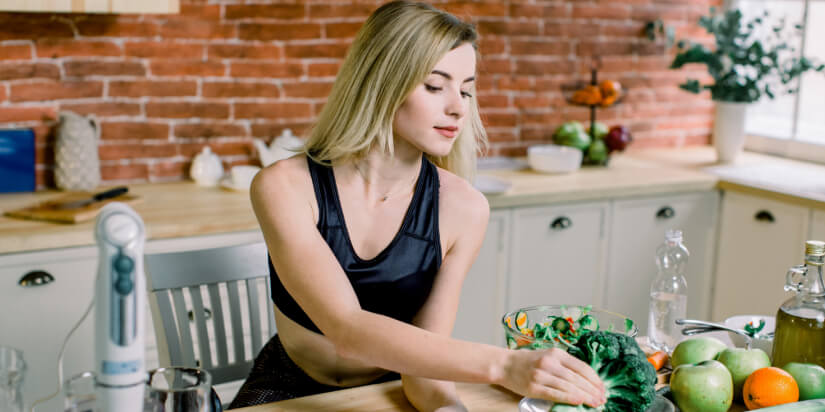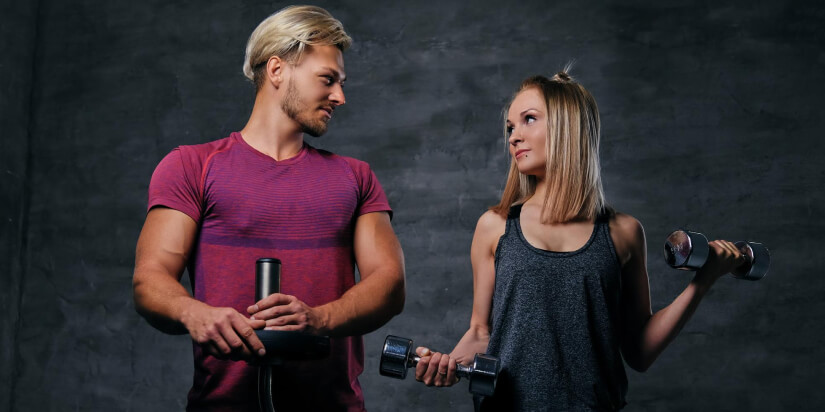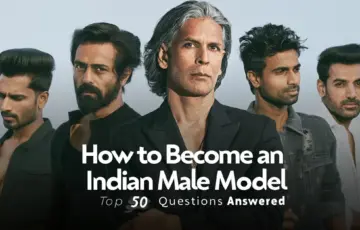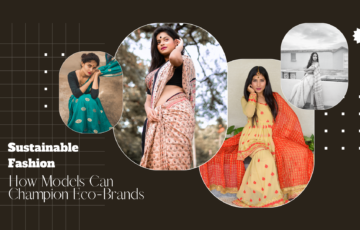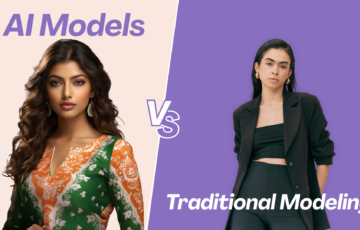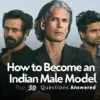Think fitness modeling is just about chiseled abs and bulging biceps? Think again. While a strong, athletic physique is undoubtedly part of the equation, the world of fitness modeling is a dynamic and demanding industry that values discipline, professionalism, and a genuine passion for a healthy lifestyle. It’s more than just looking the part; it’s about living it. From representing major sportswear brands to appearing in health magazines and wellness campaigns, fitness models are the aspirational faces of strength, vitality, and dedication.
This career path combines the worlds of high-level fitness and commercial modeling, creating a unique space for individuals who have sculpted not just their bodies but also an unwavering work ethic. It’s a competitive field, but for those with the right combination of physical attributes, athleticism, and a professional mindset, it can be an enriching journey. At Dazzlerr, we believe in empowering you with the knowledge to chase your dreams. This comprehensive guide will walk you through the essential fitness model requirements, how to navigate the world of fitness modeling agencies, and what it takes to nail your first fitness photoshoot. Let’s dive into what it truly takes to build a career in fitness modeling.
The Core Requirements: Building Your Foundation as a Fitness Model
Before you consider a modeling portfolio or a casting call, you need to build a solid foundation. The requirements for a fitness model go far beyond surface-level aesthetics. They are a holistic combination of your physical look, athletic capability, nutritional discipline, and professional attitude.
Physical Attributes: The Look of a Fitness Model
Unlike high fashion, the fitness industry celebrates a broader range of body types. However, there are some common denominators. The key is an athletic physique that looks healthy, strong, and capable. This doesn’t mean you need to be a bodybuilder. The industry has several niches:
- Commercial Fitness Model: This is the most common category. Think of models in ads for popular athletic wear, gym chains, or wellness apps. They have a lean, toned, and approachable look. They need good muscle definition but are not overly bulky.
- Sports-Specific Model: These models often have a background in a particular sport (e.g., running, yoga, CrossFit, swimming). Their physique reflects their discipline, and they are frequently hired for their authentic ability to perform specific athletic movements.
- Bodybuilding/Physique Model: This is a more specialized niche focused on maximum muscle definition and size, often for supplement brands or bodybuilding magazines.
Regardless of the niche, a consistently low but healthy body fat percentage is crucial to showcase muscle definition. This is what makes the muscles pop under studio lighting. Equally important are factors like clear skin, healthy hair, and a bright smile, as they all contribute to the overall picture of health and vitality that brands want to project.
Athleticism and Functional Fitness
This isn’t a job where you can just look strong; you have to be strong. During a fitness photoshoot, you might be asked to hold a challenging yoga pose for several minutes, perform explosive plyometric jumps repeatedly, or lift weights for multiple takes. This requires a high level of functional fitness, including:
- Endurance: The ability to sustain physical activity for long periods without losing form or energy. Photoshoots can be long, grueling days.
- Strength: Genuine strength is needed to perform exercises with proper form, making the shots look authentic and powerful.
- Flexibility and Mobility: A wide range of motion is essential, especially for yoga, pilates, and dynamic movement shots. It also helps prevent injury on set.
A regular and well-rounded fitness model workout plan is non-negotiable. It should encompass strength training, cardiovascular work, and flexibility training to build a capable and resilient athletic physique.
Nutrition and Diet: Fueling the Physique
You can’t out-train a bad diet. This saying is the gospel for anyone serious about fitness modeling. Your physique is built as much in the kitchen as it is in the gym. A disciplined fitness model diet is essential for maintaining a low body fat percentage and visible muscle definition year-round. This involves:
- Understanding Macronutrients: Knowing the right balance of protein, carbohydrates, and fats to fuel workouts and build lean muscle.
- Consistent Meal Prepping: Success in this area comes from preparation. Most fitness models plan and prep their meals in advance to avoid making poor food choices.
- Hydration: Staying well-hydrated is critical for muscle function, skin health, and overall energy levels.
- Discipline: Resisting temptations and maintaining a healthy lifestyle, even during off-seasons or holidays, is a hallmark of a professional.
Professionalism and Mindset: The Intangibles
This is what separates amateurs from professionals. The most successful models are reliable, easy to work with, and have a resilient mindset. Key professional traits include:
- Punctuality: Always arrive early for castings and shoots.
- Work Ethic: Be prepared to work hard all day with a positive attitude.
- Coachability: Be able to take direction from photographers, art directors, and clients without ego.
- Resilience: The industry is filled with rejection. You need the mental toughness to handle “nos” and continue to work on your craft.
- Business Acumen: Understand that you are your brand. This involves managing your finances, marketing yourself, and networking within the fitness industry.
Breaking Into the Industry: Finding and Working with Fitness Modeling Agencies
Once you’ve built the foundational requirements, the next step is to get noticed. While some models find success as freelancers, partnering with a reputable agency can significantly accelerate your career.
Do You Need a Fitness Model Agency?
For most aspiring models, the answer is yes. A good fitness model agency provides several key advantages. They have established connections with top brands, photographers, and casting directors that you wouldn’t have access to on your own. They handle the business side of things, like negotiating rates, contracts, and usage rights, ensuring you are paid fairly and protected legally. While they take a commission (typically 15-20%), the access and opportunities they provide often lead to higher-paying jobs that more than cover this cost. Seeking representation is a strategic move for long-term success in fitness modeling.
How to Find Legitimate Fitness Modeling Agencies
The modeling world has its share of scams, so thorough research is vital. Here’s how to find the right partners:
- Look at the Big Players: Research which agencies represent the models working for major brands like Nike, Adidas, and Lululemon or appearing in magazines like Men’s Health and Women’s Health. Many top agencies have “Sports” or “athletic” divisions.
- Check Reputable Online Directories: Websites like Models.com list legitimate agencies across the globe.
- Attend Open Calls: Some agencies hold open casting call events to find new talent. Check their official websites or social media for announcements.
- Red Flags: A legitimate agency will NEVER ask you for money up front. If an “agency” requires you to pay for classes, workshops, or expensive photoshoots with their “required” photographer, it is almost certainly a scam. Legitimate agencies make money by taking a commission from the jobs they book for you.
Preparing Your Submission Package
When you submit to agencies, you need a professional package. This typically includes:
- Digitals (or Polaroids): These are simple, un-retouched photos that show your natural look and current physique. They should be taken in good, natural light against a plain background. You’ll need a headshot (smiling and neutral), a full-body shot, and profile shots. Wear simple, form-fitting clothing like a sports bra and shorts or a swimsuit.
- Your Stats: This includes your height, weight, and key measurements (chest, waist, hips for women; chest and waist for men). Honesty is critical here.
- A Brief Bio or Resume: Mention any relevant experience in sports, athletics, dance, or acting. Keep it concise and professional.
Your First Fitness Photoshoot: A Comprehensive Guide
Booking your first job is an exhilarating moment. Whether it’s for your modeling portfolio or a client, being prepared for your fitness photoshoot is crucial for success.
Preparing for the Photoshoot
Preparation begins weeks in advance. Physically, this often involves a “peak week” where you might adjust your fitness model workout and diet to ensure you look your absolute best, often focusing on shedding any excess water weight for maximum muscle definition. Grooming is also key—think about your hair, nails, and any necessary tanning (a spray tan is usually preferred over sun tanning).
Mentally, you should practice. Look at fitness magazines and brand websites to study posing for fitness. Understand the client’s brand and the mood of the shoot. Pack a bag with essentials: multiple outfit options (unless provided), healthy snacks, plenty of water, resistance bands to “pump up” muscles right before shooting, and a great attitude.
During the Photoshoot: On-Set Etiquette
Your professionalism on set determines whether you get hired again.
- Collaborate with the Photographer: They are the experts in lighting and angles. Listen to their direction and trust their vision, but don’t be afraid to offer your ideas if appropriate.
- Maintain High Energy: Fitness photography is about capturing energy and movement. Even when holding a static pose, your expression and body language should convey strength and vitality.
- Be Patient and Positive: While lighting and equipment are adjusted, there can be a lot of downtime. Use this time to rest and stay focused. Never complain.
Posing for Fitness Photography
Posing for fitness is different from fashion posing. The goal is to highlight musculature, strength, and athleticism. Key principles include:
- Create Angles: Never stand flat-footed and square to the camera. Twisting at the torso, bending limbs, and creating triangles with your body adds dimension and makes you look more dynamic.
- Engage Your Core: A tight core is central to almost every fitness pose. It provides stability and emphasizes abdominal definition.
- Flex, but Naturally: You need to engage your muscles to show them off, but it shouldn’t look forced or pained. It’s a controlled, sustained flex that looks powerful yet effortless.
- Know Your Strengths: Understand which poses and angles best showcase your unique athletic physique. Practice in front of a mirror to see what works.
Building Your Fitness Model Portfolio
Your modeling portfolio is your visual resume. It needs to be strong, versatile, and professional. After your fitness photoshoot, select only the best images. You want to showcase your range. Include:
- A strong commercial headshot.
- Shots showing your physique clearly.
- Action shots (running, jumping, lifting).
- Lifestyle shots (e.g., wearing athleisure in a casual setting).
- Images that demonstrate different emotions and energies.
Your portfolio should tell a story about who you are as a model and what you can bring to a brand. It is the most critical tool in your quest to become a fitness model.
Building Your Brand Beyond Agencies
In today’s digital world, waiting for an agency to call is not enough. The most successful models are also savvy entrepreneurs who build their branding.
The Power of Social Media for Fitness Models
Platforms like Instagram, TikTok, and YouTube are powerful tools for building a following and attracting the attention of brands and agencies. A strong social media presence can lead to paid partnerships, sponsorships, and even direct bookings. Use it to showcase your healthy lifestyle, share your fitness model workout tips, post behind-the-scenes content from shoots, and engage with a community that supports your journey. Authenticity is key. Let your personality shine through.
Networking in the Fitness Industry
Your network is your net worth. Attend fitness expos, industry events, and even local charity runs. Build genuine relationships with photographers, stylists, other models, and brand representatives. Be professional, be kind, and be memorable. You never know where your next opportunity will come from. The fitness industry, while large, is also tightly knit, and a good reputation will precede you.
Conclusion: Your Journey in Fitness Modeling Starts Now
Embarking on a career in fitness modeling is a marathon, not a sprint. It requires an immense amount of dedication to maintain the rigorous fitness model requirements, the tenacity to navigate the world of agencies and casting calls, and the professionalism to excel on set. It’s a career built on a foundation of a truly healthy lifestyle, where your body is both your temple and your instrument.
From developing an athletic physique and a disciplined mindset to building a stunning modeling portfolio and a strong personal brand, every step is a building block toward success. Remember that your unique look and athletic abilities are your strengths. Embrace the journey, stay resilient in the face of challenges, and never stop learning and improving. The world of fitness modeling is waiting for authentic, dedicated individuals to inspire the next wave of health and wellness. Here at Dazzlerr, we encourage you to take that first step with confidence. Your time to shine is now.

